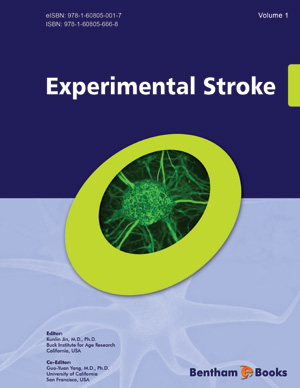Abstract
Stroke, or brain ischemia, is a leading cause of morbidity and mortality worldwide. It is also a leading cause for long-term disabilities. Although enormous progresses have been made in recent years towards defining the responses of brain to ischemia, thrombolysis remains the only effective treatment for stroke patients. Unfortunately, thrombolitics have limited success and a serious side effect of intracerebral hemorrhage. It has been well recognized for many years that excessive Ca2+ accumulation in neurons is essential for neuronal injury associated with brain ischemia. However, the exact mechanism(s) and pathway(s) underlying the toxic Ca2+ loading remain elusive. The objective of this chapter is to discuss the role of several major Ca2+-permeable cation channels, including NMDA-receptor-gated channels, TRPM7 channels, and acid sensing channels, in glutamate-dependent and independent Ca2+ toxicity associated with brain ischemia.






















